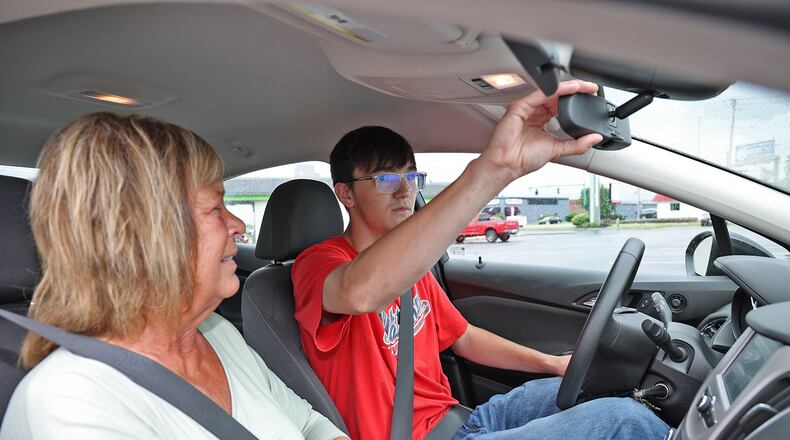Drivers between the ages of 16 and 17 are three times more likely than adult drivers to be involved in a deadly accident, according to AAA. During what is called the “100 deadliest days” between Memorial Day and Labor Day, the risk for fatal teen crash increases 17%.
“Teens are driving with less intention in the summer,” said Kara Hitchens, AAA spokeswoman. “They aren’t driving to school or to work as much. They have more free time and may drive more recklessly. There are so many things they can be distracted with in the car, whether that be an entertainment center, ordering something, or their cellphones.”
Linda Schetter, owner of Springfield’s School of Driving, said they teach teens about the “100 deadliest days.”
“We have explained to teens during both classroom and the driving portion about the ‘100 deadliest days’ during the summer months to hopefully prepare them,” Schetter said.
Teenagers make up about 5% of the driving population in Ohio, but were involved in more than 15% of Ohio crashes between 2014 and 2016.
Over the last five years, 15- to 17-year-old drivers have been at fault in more than 67,000 crashes in Ohio. Of those, 150 were fatal and 1,451 included a serious injury, according to Ohio State Highway Patrol data.
Distracted driving has become a major concern over the last several years of both teens and adults, sparking state lawmakers including Governor Mike DeWine to seek stronger penalties for the crime.
About 40% of teen drivers have seen a text or email while driving in the last 30 days, and 52% have sent a text or email, according to AAA. Roughly six in 10 crashes involving young drivers result from distraction.
Schetter said a big part of their curriculum is based on distracted driving and the several types of distractions. She said that passengers in the car, cell phones and music “tend to be the biggest distractions teens fall prey to.”
“Things going on in their lives, in their heads, outside the car, and inside the vehicle can pull their attention and focus from the task of driving,” she said.
“While distracted driving can happen at any time, we see an increase in teen driving crashes during the summer months. This is mostly because they now have more flexible schedules since school is not in session. Some would even call it ‘freedom’,” she added.
Drivers ages 15 to 17 racked up 12,420 traffic citations in 2018 — 189 for operating a vehicle while under the influence, 7,804 for speeding and 40 for distracted driving.
“There are now laws in place for these exact reasons. It is now against the law for new teen drivers to be on their phones while driving, and for the first year, passengers are limited to one non-family member,” Schetter said.
Lawmakers are considering requiring teen drivers to hold their learner’s permits for an entire year, rather than six months, to get their license for an extra six months of experience.
“This is not just a danger to teens. This is not just a teen driver problem. This is everyone’s safety issue,” AAA spokeswoman Cindy Antrican said.
Teens should utilize safe driving habits that can help minimize their risk of fatal accident, according to AAA.
“We stress the importance of parents getting involved with their teens. Ask the important questions... We encourage all parents of new teen drivers to have open discussion with their kids. Set boundaries, come to an agreement, and explain the ‘why’ behind it,” Schetter said.
Teaching moments for parents
1. Talk with your teen frequently and early-on about safe driving practices and refraining from speeding and impaired driving.
2. Teach by example and minimize risky behaviors when driving.
3. Write a parent-teen driving agreement that sets family rules for teen drivers.
4. Buckle up! According to AAA, 60% of teens killed in a crash in 2015 were not wearing a seat belt.
AAA also offers additional resources for parents to use.
About the Author

